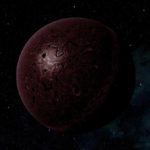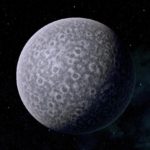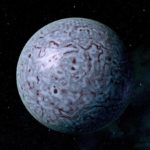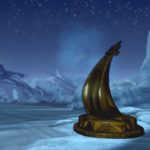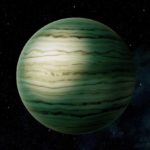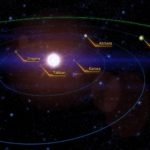System Specs:
- Stellar Mass: Amada Sol Masses
- Stellar Class: 1.00
- Luminosity: N/A Sol
- Planets: 5
- Moons: 4
- Asteroid Belts: 0
- Asteroids: 0
- Objects: 0
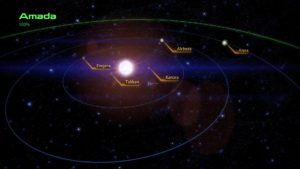
Amada has two worlds of interest to xenoarchaeologists. The rest are inhospitable with moderate mineral wealth. However, because of alien influence in its distant past the system is a rare source of extractable element zero through Eingana.
The system was patrolled by the SSV Normandy in 2183 for geth activity, as three ships have been reported missing there in the past month. Instead of geth the Normandy encountered a Collector Cruiser and was subsequently destroyed. The remains crashed on Alchera, along with the body of Commander Shepard. Two years later, the revived Shepard may receive a transmission from Admiral Hackett directing them to the ship’s final resting place to account for missing crew and to plant a monument to its memory.
–
Planets Directory:
- Takkan
- Karora
- Eingana
- Alchera
- Anjea
–
Takkan:

- Orbital Distance: 1.2 AU
- Orbital Period: 1 Earth-year
- Keplerian Ratio: 1.728
- Radius: 4,312 km
- Day Length: 45.8 Earth-hours
- Atmospheric Pressure: 0.49 atm
- Surface Temp: 286 °C
- Surface Gravity: 0.5 g
- Mass: 0.227 Earth-masses
Orbiting closest to the F-class star Amada, Takkan is a blistering, sun-blasted hell. Neither its carbon dioxide nor its weak magnetic field provides any protection from the star’s harsh radiation. Fortunately, Takkan has few significant resources, and is only notable for an unusual purple desert in the southern hemisphere, thought to be the result of eroded spessartite.
–
Karora:
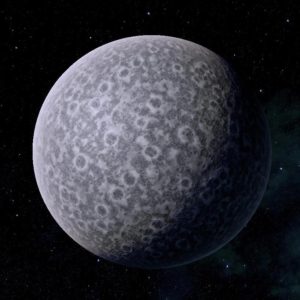
- Orbital Distance: 2.4 AU
- Orbital Period: 2.9 Earth-years
- Keplerian Ratio: 1.644
- Radius: 2,446 km
- Day Length: 63.6 Earth-hours
- Atmospheric Pressure: 0.14 atm
- Surface Temp: 99 °C
- Surface Gravity: 0.28 g
- Mass: 0.041 Earth-masses
Karora is essentially a great rock in space, tidally locked to Amada. Its only notable feature is a chain of craters stitching across the northern hemisphere, thought to be the result of impacts by a swarm of meteors. Karora’s low density suggests it contains no mineral wealth beyond common light metals. It maintains a tenuous atmosphere of krypton and xenon.
–
Eingana:
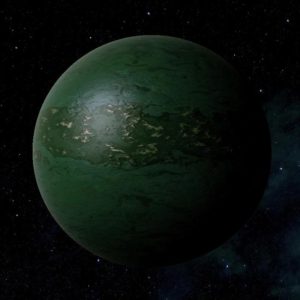
- Orbital Distance: 5.3 AU
- Orbital Period: 12.2 Earth-years
- Keplerian Ratio: 1
- Radius: 5,733 km
- Day Length: 20.8 Earth-hours
- Atmospheric Pressure: 0.84 atm
- Surface Temp: 36 °C
- Surface Gravity: 0.86 g
- Mass: 0.69 Earth-masses
- Satellites: 1
Eingana is a hot, beautiful, and deadly world, covered with the debris of ancient starships. Approximately 127,000 years ago, a series of battles were fought over it by two organic species, the thoi’han and the inusannon. Although no records of the conflict remain, most historians agree that both races wanted to colonize Eingana, and neither were willing to share. The two lost hundreds of ships in a series of battles over Eingana and its moon, Barraiya; many of these were eventually pulled in by the planet’s gravity well.
The mass effect drive cores of these ships broke apart, dumping refined element zero over large stretches of landscape. This poisoned the environment and a wave of extinctions followed. Many of the animal species that remained showed a tendency to develop biotic powers. As the ecology of Eingana is energetic and aggressive, this makes colonization a deadly peril.
–
Alchera:
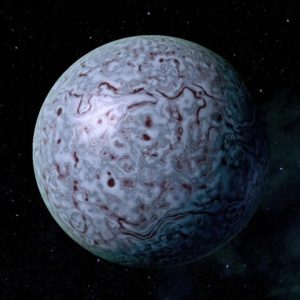
- Orbital Distance: 9.5 AU
- Orbital Period: 29.4 Earth-years
- Keplerian Ratio: 0.992
- Radius: 9,229 km
- Day Length: 59.2 Earth-hours
- Atmospheric Pressure: 0.83 atm
- Surface Temp: −22 °C
- Surface Gravity: 0.85 g
- Mass: 1.767 Earth-masses
- Satellites: 3
Alchera’s crust is composed of carbon and water ice. While low density, its large size allows it to retain a thick atmosphere of methane and ammonia. It is believed that if Alchera had acquired a bit more mass when the Amada star system formed, it would have formed the core of a second outer-system gas giant. Alchera has three moons: Uluru, Wandjina, and Baiame.
–
Anjea:
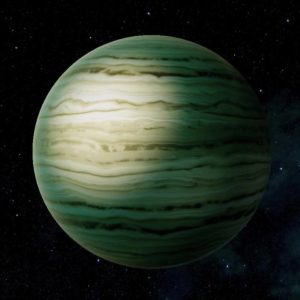
- Orbital Distance: 15.3 AU
- Orbital Period: 60 Earth-years
- Keplerian Ratio: 0.995
- Radius: 23,120 km
- Day Length: 17.4 Earth-hours
- Atmospheric Pressure: N/A atm
- Surface Temp: N/A °C
- Surface Gravity: N/A g
- Mass: N/A Earth-masses
Anjea is a typical ammonia-methane ice giant. Traces of chlorine in the atmosphere give it a distinct green tint. Penetrating scans have revealed large numbers of hollow, unpowered objects with dimensions of 3.14 by 12.56 by 28.26 meters circulating in the equatorial cloud bands. These objects appear to have “sails” or “wings” attached, allowing them to be borne aloft by Anjea’s winds. While they are too deep to be reached for study, popular conjecture in xenoarcheological circles holds that they are “coffins” of an ancient race who laid their dead to rest in the gas giant.
–
–
video

